What I find most fascinating about trails and cultural routes is their power to connect and foster social interactions and shared responsibility, creating social benefits for both tourists and the local people.
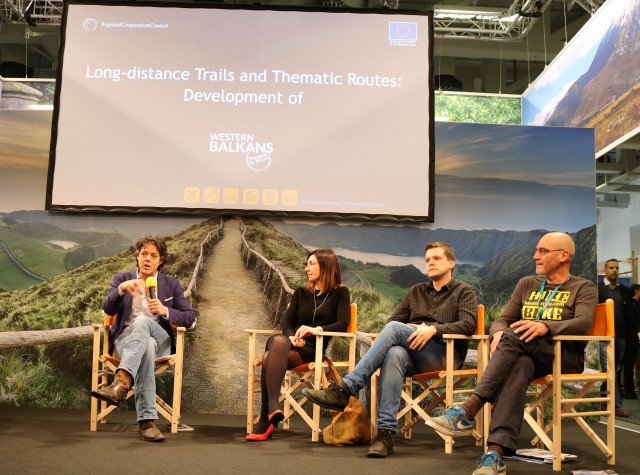
Discussing socio-cultural benefits of trails at ITB Berlin: Alex Crevar, me, Vladan Kreckovic and Thierry Joubert
‘Scenic Roads and Trails’ were the theme of the three-day series of events and presentations on the Adventure stage at ITB Berlin last week. It was simply music to my ears as I love trails for their power to connect people, places, cultures and nature. It is also a subject close to my heart as co-creating the Transcaucasian Trail, a new long-distance hiking path, has brought me into sustainable tourism. At ITB, together with the Via Dinarica trail experts from the Western Balkans we discussed the value of long-distance trails and cultural routes for the development of sustainable tourism, and their positive social impacts on tourists and the local communities.
Long-distance trails provide excellent opportunities to experience nature, history and culture. They help preserve the local heritage, give coherence to cultural themes and develop cultural understanding between the hosts and the guests. During the panel I was asked why creating local pride through trail development is important, and does that help to bring the locals on board and bring authenticity to the route?
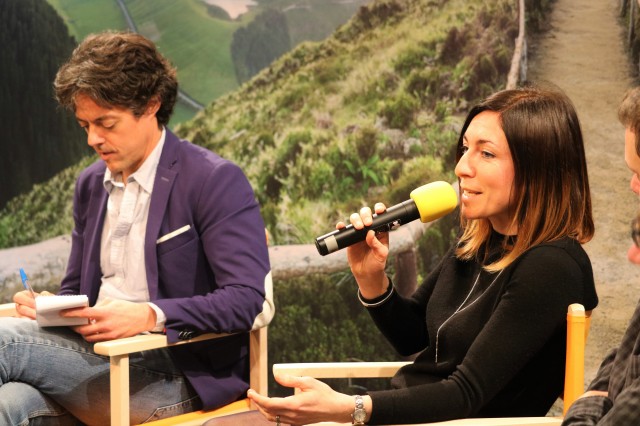
‘What fascinates me most about trails is their power to connect: people, destinations, attractions, cultures and nature’
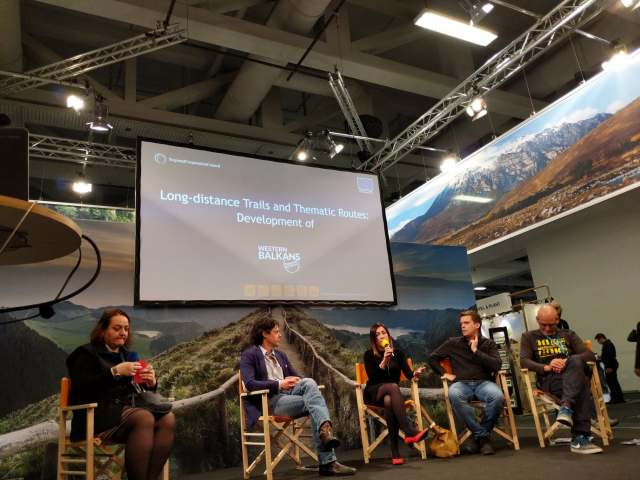
Trails and the local pride
Trails and cultural routes give the opportunity to bring communities together, to nurture community pride, instil a sense of belonging and deepen the awareness and knowledge of the local history and the resources they have. Creating or strengthening the community pride is one of the key social benefits of tourism, and tourism is not sustainable without positive social impacts.
These routes also bring communities and tourists together. They ‘stimulate cultural exchanges that instil local pride, enrich the cultural identity and heritage of destinations and foster closer ties between visitors and host communities’ (UNWTO ‘Global Report on Cultural Routes and Itineraries’, 2015). The report also calls such routes ‘a window of opportunities’ thanks to their economic and social impacts.
![20170714_123725[1]](https://oneplanetblogdotcom.files.wordpress.com/2018/01/20170714_1237251.jpg?w=640)
Local and international volunteers from seven countries brought together to build the Transcaucasian Trail, July 2017
If the local people are proud of their natural and cultural heritage and if they understand the value this can have for visitors, they will be willing to share it and hence make it into a more authentic, more immersive and more educational experience. They will also be willing to share it with trails planners and trails developers, advise them on best routes and hidden gems along the route, which again makes the trail much more authentic.
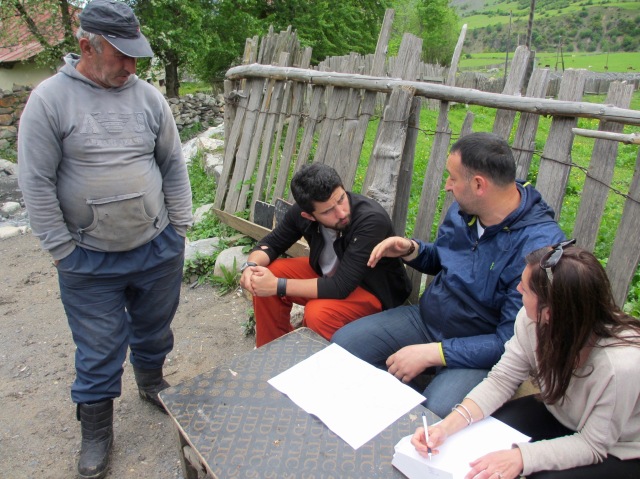
Community consultation for the Transcaucasian Trail. Mulakhi in Svaneti, Georgia. June 2016
We have had several situations during scouting and planning the Transcaucasian Trail when local people advised us to take a different route that would make the trail more interesting, safer and more accessible, that would help discover those hidden gems or simply help avoid conflict amongst communities. This not only has generated more unique experiences for trail users but also encouraged and enabled the locals to participate in tourism planning process, enhancing their self-esteem and self-belief, improving cooperation and communication as well as fostering shared responsibility.
Interestingly, The Columbia Valley Greenways Trail Alliance (Canada) mentions that ‘improved self-image and social relationships, reduced crime rates, and a lifestyle encouraging youth to find their entertainment in healthy, wholesome pursuits, are all found to be byproducts of local trail systems’. This post also has a good summary of various benefits of trails.
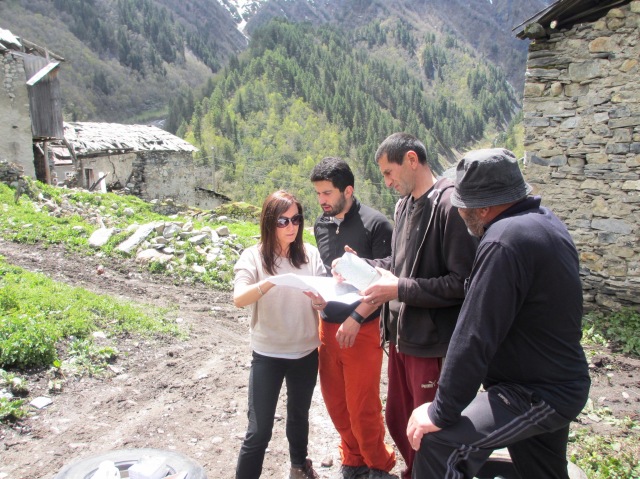
Community consultation for the Transcaucasian Trail. Adishi in Svaneti, Georgia. May 2016
Trails: the power to connect
Trails provide a themed and interpreted journey through landscapes, creating links between sites, attractions, tourism businesses and people by providing information and storytelling along the way (MacLeod, 2016). What fascinates me most in trails is that power to connect: communities within one village or region; communities in various regions; communities and trail users; trail users with other trail users; trails users and nature, culture and other attractions; attractions with other attractions; trail users with the natural and cultural heritage; communities with the natural and cultural heritage…
This develops the cultural identity of destinations and enriches interactions between tourists and hosts, providing all the benefits written above.
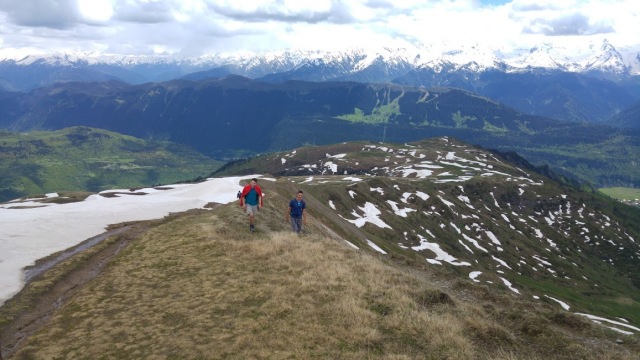
Trails and local story
And going back to the issue of participation of the locals in trail creation and, consequently, in tourism development in their destination. The community participation is crucial for the interpretation of the trail: how the information will be displayed and communicated to the visitors, what kind of story it will tell and how, what kind of experience it will provide.
As mentioned earlier, trails and cultural routes provide excellent opportunities for users to experience the natural and cultural heritage of the destinations along the route – both separate destinations (villages, regions) or one destination for the whole trail (the Caucasus region, the Western Balkans etc). Identification of these opportunities during trail planning – in close cooperation with the local communities – ensures that the interpretive signage at various strategic locations and points of interest will help tell a story to trail users and provide a deeper experience for those interested in learning more about the region. Sharing the local story is another way to deepen the sense of pride of the community’s own history and cultural heritage.
Developing a story around and behind the trail – why is it special, what makes it unique that will make people come and use it – is another fascinating subject we touched on during the ITB panel. I will write about it another time.
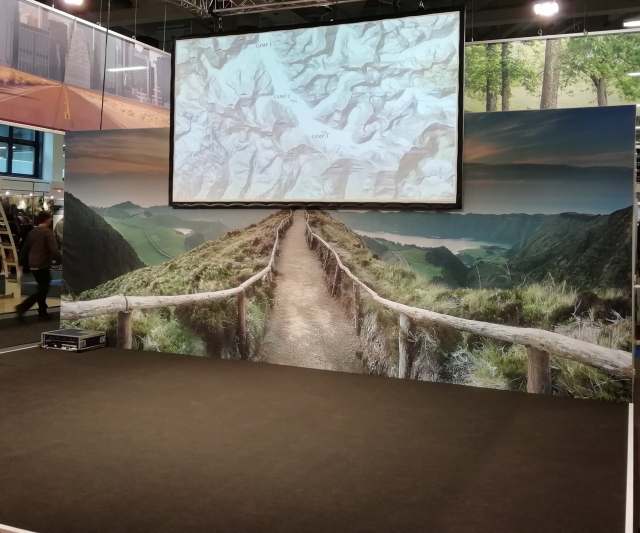
The Adventure stage, Responsible Travel Hall, ITB Berlin 6-8 March 2019
